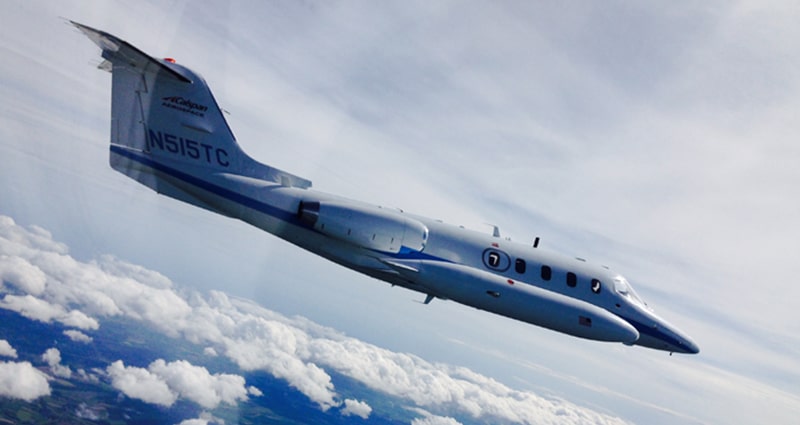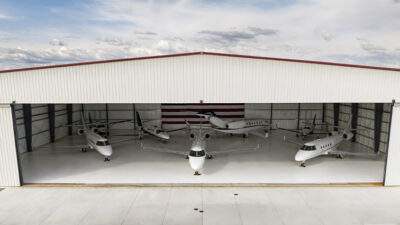A Brief History of Upset Training

On March 3, 1991, a Boeing 737 crashed near the approach end of Colorado Springs Municipal Airport runway 35. The cause of the crash was later determined to be loss of control in-flight (LOC-I) following a rare but real rudder malfunction. United Airlines (UA) Flight 585 struck Widefield Park at a nearly vertical attitude, killing all 25 people on board. Two additional B-737s suffered the same malfunction that decade. In the third event, Eastwind Flight 517, the pilot was able to recover and land safely. Clearly piloting mattered. The National Transportation Safety Board (NTSB) stated in its related safety recommendation (A-96-120):
It is recognized that pilots receive unusual attitude training when obtaining their private pilot and commercial pilot certificates as well as their instrument ratings. However, the ability to recognize and recover from an unusual attitude can be severely diminished after several years and thousands of hours in airline operations with no additional or recurrent unusual attitude training. Additionally, the airplanes in which the pilots received unusual attitude training are most likely dissimilar from the airplanes they regularly operate. Recognition and recovery skills learned in a light general aviation-type airplane are not necessarily transferable to the operation of a swept-wing, heavy commercial jet aircraft.
The NTSB points to a longstanding concern about additional training. Is that true? Was that concern evident? The documentation points to yes. On November 16, 1968, a Boeing 727 crashed near Detroit due to loss of control in adverse weather. In the associated safety recommendation (A-70-21), the NTSB recommended more unusual attitude training. The FAA responded: “It is inconceivable to require training maneuvers which would place a large jet airplane in a nose high, low airspeed, high angle-of-bank situation”.1 Multiple LOC-I accidents followed this initial discourse, which resulted in death and a continuation of similar discourse.
NTSB safety recommendation A-96-120, from UA Flight 585, became the standard bearer calling for upset recovery training:
Require 14 CFR Part 121 and 135 operators to provide training to flightcrews in the recognition of and recovery from unusual attitudes and upset maneuvers, including upsets that occur while the aircraft is being controlled by automatic flight control systems, and unusual attitudes that result from flight control malfunctions and uncommanded flight control surface movements.
High profile LOC-I accidents since have included Comair Flight 3272 near Monroe, MI in 1997; American Airlines Flight 587 in New York in 2001; Colgan Air Flight 3407 in Buffalo, NY in 2009; and Air France 447 over the Atlantic in 2009.
Colgan Air Flight 3407, which crashed after an avoidable stall while on approach into Buffalo-Niagara International seems to have been the tipping point. Congress rallied. Public Law 111-216 demands the FAA to require part 121 carriers to provide pilots with academic and flight or simulator training in avoidance and recovery from upsets. FAA Advisory Circular 120-111 was since published, which states that upset prevention and recovery training (UPRT) for Part 121 carriers will be required by 2019.
Interesting is the apparent lack of concern for Part 91 operators. Historical data indicates that death tolls for Part 91 operations due to LOC-I are more than four times that of Part 121. In the U.S. during the period 1988-2004, there were 9,146 total Part 91 fatalities attributed to LOC-I vs. 2,165 Part 121 LOC-I attributed fatalities.2 Since 1970, the NTSB has been calling for regulatory action mandating UPRT-type training for airlines. It literally required an act of Congress to bring it to fruition. Although the number of lives affected by Part 91 LOC-I events far exceeds that of airline LOC-I events, the individual accidents involve smaller numbers and generate less public interest. Regulation is not a likely avenue for availing this life-saving training to business aviation departments.
In summary, the NTSB has been striving for decades to have UPRT mandated for airlines. Congress passed a bill following the 2009 Colgan Air crash, which will fulfill that 45-year effort. The business aviation community will have to find avenues other than government mandates to train its pilots. Insurance incentives and partnerships with training providers have shown promise. Global Aerospace, in conjunction with their SM4 program, teamed up with Calspan in 2014 and to date their partnership has trained over 60 business jet pilots. However, the industry needs to do better.
In business, the bottom line always matters, but safety matters too. Our business leaders depend on the safety of their flight department to attend critical meetings. This additional training should be viewed as an essential business expense, not a flight department expense. We challenge our aviation and business leaders to take this next step towards making our industry safer.
1 NTSB Safety Recommendation A-96-107 through -120, October 18, 1996
2 Causal Factors and Adverse Conditions of Aviation Accidents and Incidents Related to Integrated Resilient Aircraft Control NASA/TM—2010-216261. November 2010. Mary S. Reveley and Jeffrey L. Briggs. Glenn Research Center, Cleveland, Ohio. Joni K. Evans. ATK, Hampton, Virginia. Carl E. Sandifer. Glenn Research Center, Cleveland, Ohio. Sharon Monica Jones. Langley Research Center, Hampton, Virginia.

Calspan Aerospace has been providing research and testing services in the aviation and transportation industries for over 70 years. Calspan’s Advanced Maneuvering & Upset Recovery Training (AM-URT) program provides the most genuine and technically advanced upset training experience available specifically designed for commercial jet pilots. Their curriculum is derived from real-world aviation accidents presented in a completely safe airborne simulation environment. Calspan’s training methods are based on 14 years of government and industry sponsored research and focus on the most effective upset recovery techniques. The training includes classroom instruction and in-flight training in unique Learjet In-Flight Simulators.
http://www.calspan.com
© 2025 Calspan Aerospace. All Rights Reserved.
Next ArticleRelated Posts

Emerging Security Threats in Business Aviation: Activism and Down-Route Risks
Security incidents affecting business aviation do not need to involve violence to have an operational impact. A protest delaying crew movements, blocking access to a hangar or resulting in an unauthorized photograph of a sensitive client can all trigger reputational, financial or compliance concerns for operators.

Navigating Geopolitical Uncertainty Using Business Aviation
Bigger business jets mean bigger fuel tanks, longer trips, more border crossings, and bigger wallets! With an equipment upgrade also comes the requirement for a knowledge upgrade.

